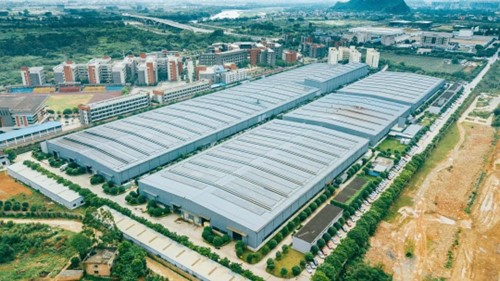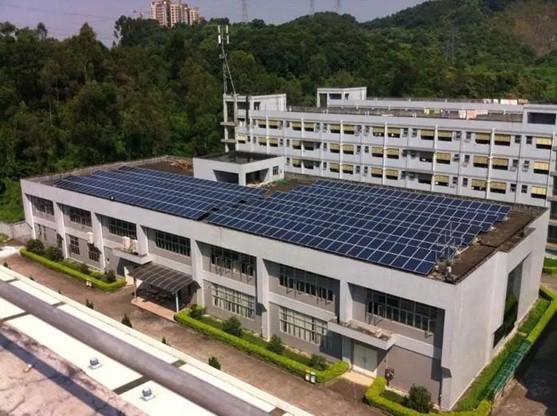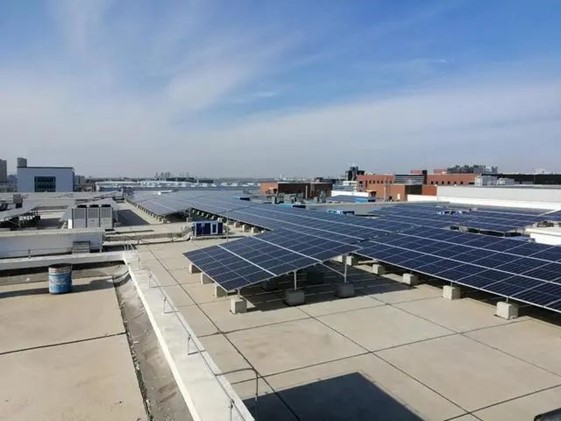Add-on and integrated photovoltaic power plant analysis, see which type is more suitable for you ?
The roofs of enterprises and residential buildings have always been forgotten resources. The construction of distributed photovoltaic power plants does not require additional land resources, and only needs to use long-term idle roofs to build. After the construction is completed, it can realize self-use and bring additional income.

01. Overview of rooftop distributed photovoltaic power generation
Distributed photovoltaic power stations are mainly based on the surface of buildings, including household photovoltaics (solar power stations on the roofs of villages and towns) and industrial and commercial distributed photovoltaics (rooftop photovoltaic power stations of industrial and commercial enterprises), which solve the problems of electricity consumption and resource utilization of users nearby. Realize the compensation and delivery of the power supply balance, that is, self-use and excess power to the Internet.
Distributed photovoltaic power station
1. The main advantages of rooftop distributed photovoltaic power plants are:
1. The output power is relatively small, and the scale can be adjusted flexibly
The capacity of the photovoltaic system can be adjusted according to factors such as roof area and construction conditions, generally between several thousand watts and several megawatts; decentralized construction can be carried out in concentrated areas.
2. Significant environmental benefits
Distributed photovoltaic power generation belongs to clean energy, which is helpful for enterprises to achieve environmental protection targets.
3. The coexistence of power generation and electricity consumption reduces the loss of long-distance transmission lines
4. Save land resources and development costs
It can make full use of the building surface (roof or outer wall), effectively save land resources, and improve the utilization rate of idle building roofs, industrial plants, etc.
2. The main problems of the distributed photovoltaic power station on the roof:

1. Technical risk – load demand
When the original roof load does not meet the requirements for installing photovoltaic panels, it needs to be reinforced. It is also necessary to consider the impact of snow disasters and wind disasters on photovoltaic panels and structures.
Adding photovoltaic panels to the factory building means that the roof load of the factory building will increase greatly. Therefore, before installing photovoltaic equipment, the safety of the house structure must be considered first to ensure that the bearing capacity of the roof can meet the requirements.
2. Waterproof design
The attached (BAPV) photovoltaic power station may damage the original roof waterproof layer and cause drainage hazards. Attention should be paid to the roof drainage design.
3. The safety and actual service life of photovoltaic panels
Auxiliary components are often exposed, such as inverters and junction boxes, which are easily damaged and reduce the actual service life.
02. Analysis of additional and integrated photovoltaic power plants
Distributed photovoltaics can be divided into industrial and commercial roof distributed photovoltaics and household distributed photovoltaics according to the different installation subjects. According to the difference in installation mode, it can be divided into two modes: add-on (BAPV) photovoltaic power station and integrated (BIPV) photovoltaic power station.
Add-on is the mainstream way of distributed photovoltaic on the roof, and its photovoltaic modules and the roof of the building are separate parts. The combination method is simple, and it is suitable for the renovation of existing roofs.
The integrated type is a building-integrated photovoltaic model, which integrates photovoltaic modules with building materials such as roofs and curtain walls, which can effectively reduce the overall material used in the building, ultimately reducing the construction cost and having greater room for future development.

Maybe you also have such doubts. Add-on (BAPV) photovoltaic power plants can be used on the roof of existing buildings (especially industrial and commercial buildings), but can integrated (BIPV) photovoltaic power plants not? In fact, both are possible. Both have their own advantages. We can choose according to our needs and current situation.
Xiamen Lianbang Technology Co., Ltd. is a leading technology company in the field of solar energy and related sustainable technologies. We have the experience, capability and financial viability required to successfully implement affordable wind & photovoltaic systems and on/off-grid power system solutions and products. We provide turnkey services including assessment, design, permitting, procurement, installation, commissioning, and operation and maintenance. We take a creative approach to designing photovoltaic systems so that they are price-competitive, high-performance and attractive.


Comments are closed